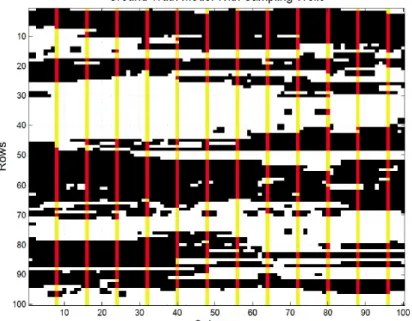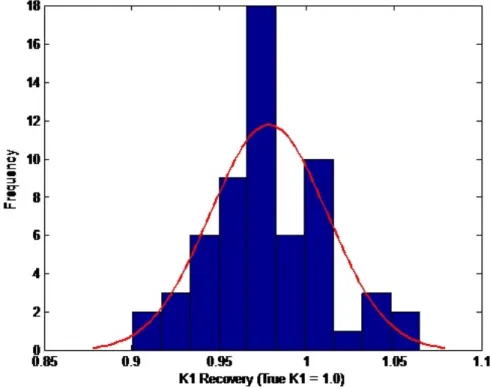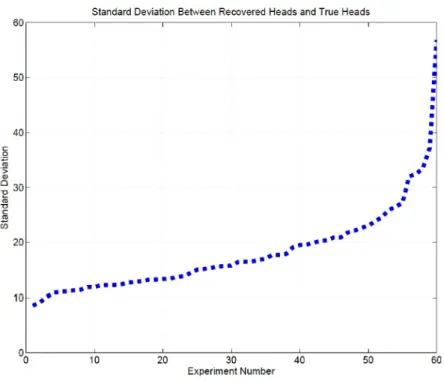Hydrology Days 2013
Dynamic data integration and stochastic inversion of a two-dimensional
confined aquifer
Dongdong Wang
1Department of Geology and Geophysics, University of Wyoming, Laramie
Ye Zhang
1Department of Geology and Geophysics, University of Wyoming, Laramie
Juraj Irsa
1Department of Geology and Geophysics, University of Wyoming, Laramie
Abstract. Much work has been done in developing and applying inverse methods to aquifer simulation problems. A new direct inversion method was proposed by Irsa and Zhang (2012) which proved that boundary condition is not required for estimating parameters in small-scale aquifer problems. The scope of this paper is to investigate the applicability of this new method for large simulation problems and to incorporate uncertainty measures in the inversion outcomes. The problem considered is a two-dimensional inverse model (50×50 grid) of steady-state flow for a heterogeneous ground truth model (100 ×100 grid) with two hydrofacies types (Chambers et al. 2000). From the ground truth model, twenty wells were sampled for facies types, based on which experimental indicator histogram and directional variograms were computed. These parameters and models were used by Sequential Indicator Simulation (SIS) to generate 60 realizations of
hydrofacies patterns, which were conditioned to the facies measurements at wells. These
realizations were further smoothed with Simulated Annealing, before they were conditioned with the direct inversion method to the dynamic data, i.e., observed heads and groundwater fluxes sampled at the same well locations. A set of realizations of estimated conductivities, flow fields, and boundary conditions have been created, which center on the “true” solutions from solving the flow problem with the ground truth model. For conductivity estimation, the estimated K was accurate within ±10% of the true values; for boundary condition estimation, the accuracy was within ± 15% of the true values. The inversion system of equations was solved with LSQR (Paige and Saunders 1982) for which we have adopted a matrix scaling preprocessor which speeds up the convergence of the solver by 50 times. In summary, the inverse method was proven applicable for integrating static and dynamic data within a stochastic framework. For inverting large problems, however, careful scaling analysis is needed to improve the performance of the iterative solver. Below we present the true model, 3 of the SIS realizations, and the corresponding inverted models. Both the estimated conductivity distribution and the inverted hydraulic head boundary condition were compared to the true values.
Acknowledgements. This research was supported by the School of Energy Resources in University of Wyoming.
1 Department of Geology and Geophysics University of Wyoming
1000 E. University Ave, Laramie, WY 82071 Tel: (307)766-9895
Wang, Zhang and Irsa
Figure 3. K1 Recovery Results
Figure 5. Comparison between Inverted Boundaries and True Boundary
Wang, Zhang and Irsa
References
Chambers, R. L, J. M. Yarus, and K. B. Hird, 2000: Petroleum geostatistics for nongeostatististicians, The Leading Edge, 19(5), 474--479, doi: 10.1190/1.1438630.
Irsa, J. and Y. Zhang, 2012: A direct method of parameter estimation for steady state flow in heterogeneous aquifer with unknown boundary conditions, Water Resource Research, 48, W09526,
doi:10.1029/2011WR011756.
Paige, C. C. and M. A. Saunders, 1982: LSQR: an algorithm for sparse linear equations and sparse least squares, ACM Transactions on Mathematical Software, 8(1), 43-71.


